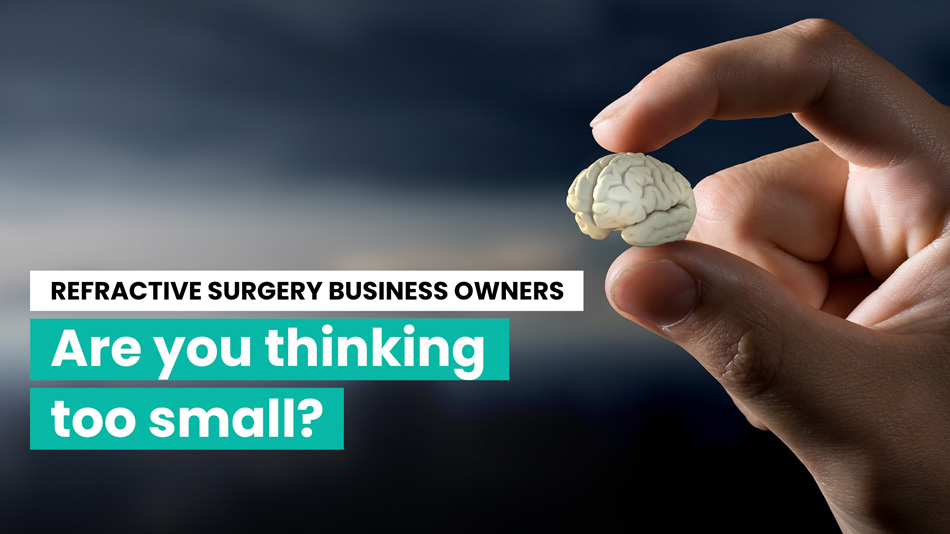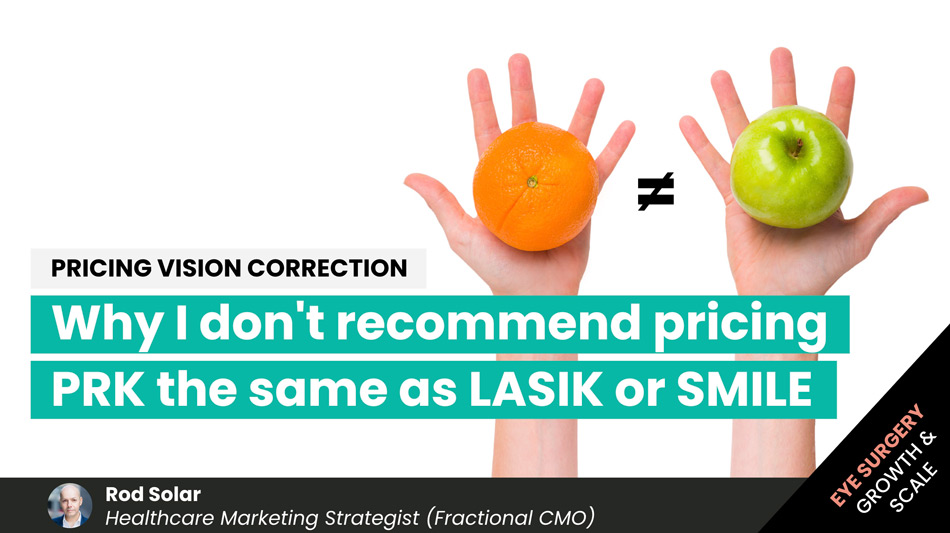The 5-Step Healthcare Marketing System your practice needs to thrive
It’s no secret that running and growing a private practice is not easy. Without a healthcare marketing system, it’s doubly hard.
While providing high-quality medical care can be extremely satisfying and your patients are often happy to share positive word of mouth with some friends and family, the road to building a thriving practice is not smooth or paved with chocolate and champagne (well for most of us mere mortals!)
In this post, we’ll share the five stumbling blocks you need to avoid, and the 5-Step Healthcare Marketing System you can implement in order to get your practice thriving. Whether you’re a private eye surgeon, orthopaedic surgeon, or dentist, we’ve seen these 5 Steps literally transform high-quality private clinics around the world, and we know that by following their lead, you will be able to scale up your practice and help it thrive through the 2020’s and beyond.
What are the 5 healthcare marketing system stumbling blocks that slow practice growth across the globe?
These are the top 5 challenges we see day in and day out when we meet with surgeons at their clinics:
- I am not getting enough leads
- I have a low telephone conversion rate
- I have a lower than desired first appointment conversion rates
- I am not getting paid what I’m worth (Underpricing)
- We provide excellent surgical outcomes but we don’t get enough referrals as we’d like
For each marketing challenge, we will briefly discuss what the challenge looks like for most practices, what causes the challenge, what impacts the marketing challenge has on your business, and how you can address the challenge .
Challenge 1: Not enough leads
First of all, let’s define what a lead is.
A “lead” is a person that engages with the organization’s call handling team to have a sales conversation.
Some organizations further define leads as someone who has provided a minimum data set (e.g. name, e-mail, lead source) or anyone that has engaged with a call handler for a minimum amount of time (e.g. 4 minutes). Everything starts with leads. Without leads, you have no calls to answer, no people to evaluate, no patients to treat and no one to refer you to their friends and family.
Not having enough leads is a symptom of a broken marketing system. A broken marketing system results from one or more of the following conditions:
- Not enough people in your market need or want what you offer
- Your competition is out-marketing you
- A lack of quality marketing materials or consistently applied cost-effective marketing tactics
- Low offer awareness
- Not enough quality content to help prospects evaluate what you offer
- Low or no ability to convert those who become aware of what you offer into leads
When people call you for the first time at your clinic, do you take their information every time (even if they do not book the first appointment?) If not, you are missing a significant opportunity that comes from simply counting leads.
One of the most significant reasons that clinics are unable to manage lead flow is because they do not count them. Counting your leads (some people call them enquiries) is vital if you want to assess your healthcare marketing.
Unfortunately, most surgeons we have encountered do not count their leads. Perhaps it is because of the lack of marketing tradition in healthcare. Maybe it is because many surgeons do not consider someone a potential patient until they schedule the first appointment with that person.
Whatever the reason for not counting your leads, it does not matter. Spending money on marketing without counting leads is like prescribing treatment without examining the effects of that treatment. How will you know if the treatment is working or not? You won’t.
Counting leads doesn’t just help you evaluate whether your marketing is working or not. Keeping leads in a database will enable you to follow up with leads after the first contact.
Most practices start out with the problem of nobody calling or emailing them. Without leads, it is impossible to build a practice. Regardless of where they heard about you, you need to have potential patients enquiring with you if you are ever to treat any actual patients.
In the next post in this series, we’ll discuss how to address challenge one and get more leads contacting you.
How to address challenge 1 with the healthcare marketing system: Get more leads to contact you
The good news is that there are several viable actions you can take to overcome having not enough leads. Lead generation is Step 1 in the 5-Step Healthcare Marketing System.
Lead generation is about:
- raising awareness of what you offer
- enabling offer evaluation, and
- converting those who become aware of your offer into leads.
Usually, the most cost-effective and predictable source of a consistent flow of new leads is online marketing. You can attract interested people to your website and then convert these website visitors with effective website design.
To grow your leads you need to understand which online marketing materials and tactics work best to raise awareness, what content to create to enable prospects to evaluate your offer, and what conversion mechanisms convert prospects into leads and make your telephones ring.
Once you set up and utilize these materials and tactics, you need to analyse your results continuously. Finally, you need to test what works against what does not to improve your results over time.
The following marketing materials work best for generating leads:
- A well-designed website design that can convert visitors into leads
- Lead magnets (chunks of content that provide irresistible value that you can exchange for your prospect’s contact information)
- Tripwires (valuable offers that have a very low money or time costs to the prospect – like a seminar, webinar, video call or free appointment)
- FAQ videos to enable people to better evaluate what you offer
The following marketing tactics are most cost-effective for lead generation:
- Search Engine Optimization (SEO) and blogging to create awareness of what you offer
- Social media marketing (for creating awareness among those who are unfamiliar with what you offer and for giving happy patients an easy way to refer their friends and family to you)
- Paid traffic generation from search engines and social media for creating awareness of your lead magnets and your other content
- E-mail marketing (to automatically follow-up with leads that get your lead magnets and to stay in touch with those who initially do not convert)
- Event marketing (especially webinars and in-person seminars as a tripwire)
- Video blogging
- Customer service improvements to increase referral conversion rates (see Challenge 5 below)
Challenge 2 – Low telephone conversion rates
Almost without exception, every person who has ever had private surgery called the clinic before their first appointment. Therefore, your team’s mastery of the telephone as a tool for booking first appointments is crucial to your growth (and survival) as a healthcare clinic. We suggest you measure your clinic’s performance in this area with the lead-to-first appointment conversion rate (also known as your telephone conversion rate).
We can express the telephone conversion rate as: The number of first appointments arising from new leads divided by the number of new leads that contact your clinic. For example, if you book 25 first appointments from 100 leads, your telephone conversion rate is 25%.
At the most basic level, not answering the phone results in low telephone conversion rates. People have little interest in waiting for you to return their call when they can easily call your competitor.
Even if you answer your phone, a low telephone conversion rate can typically result from not having the right staff or not educating your staff to effectively handle enquiries from prospects. Another reason you might have low conversion rates at first contact is that you do not follow up with people who do not convert on the first call. Many people convert after someone has followed up with them.
What is a reasonable telephone conversion rate? The answer to this question depends on at least five things:
- Lead sources
- Lead channels
- Price
- Experience
- Training
A weak telephone conversion rate can have a significant negative impact on your private surgery business. The key negative impact of a reduced telephone conversion rate is the amount of wasted money spent on marketing. Let us say you spend 10,000 in marketing to generate leads. As a result, you track that you get 100 leads. That is 100 per lead. That is not bad.
Now, let us say that your telephone team converted 25 of them into first appointments. That is not bad either, and it results in spending 400 per the first appointment. However, what if your conversion rate was 50% instead of 25%? It does not take too much work to find that your cost per lead would be 200, which is 50% less than it would have been had you converted at 25%. This is the power of a good telephone conversion rate.
How to address challenge 2 with the healthcare marketing system: Get more conversions from phone calls and emails
The 2nd step of the healthcare marketing and sales system is increasing conversion rates. The most cost-effective tactics to increase your conversion rates at the point of the first contact is to implement:
- Telephone training to help your staff better convert leads to first appointments
- E-mail marketing to follow up leads that do not initially convert
Challenge 3 – Low first appointment close rates
The first appointment is usually the first time a prospective patient will enter your clinic. The purpose of this first appointment is often to screen the prospective patient, to identify if they are suitable for surgery, and sometimes to prepare a treatment plan for that prospective patient. By the time a prospective patient visits a clinic for a first appointment, they are likely more committed to undergoing a procedure than when they first called you. For this reason, first appointment close rates tend to be higher than telephone conversion rates.
A first appointment close rate is: The number of surgical patients arising from first appointments divided by the number of first appointments held at your clinic.
What causes a low appointment close rate? Again, the answer depends on several factors, some of which we have discussed above with reference to telephone conversion rates above:
- Lead sources
- Lead channel
- Price
- Experience
- Training
Many of these factors affect close rates at the first appointment in the same way they do telephone conversion rates. However, there are additional factors to consider, too. Because the prospective patient is now more serious about the surgery, they will often have more questions to ask. These issues will go beyond pricing and scheduling and will delve into areas where doctors are best suited to answer. Prospective patients may object to progressing to treatment for many reasons that may include:
- Expertise (“I can find a better expert elsewhere.”)
- Quality (“I can find more quality elsewhere.”)
- Timing (“I am not sure this is the right time to do this.”)
- TAI (“I would like to think about it.”)
- Third-party (“I would like to speak to my partner before I commit to anything.”)
- Location (“Your location is inconvenient for me.”)
- Second Opinion (“I think I would like to get a second opinion before making a decision to book.”)
- Procedure (“I do not believe in this procedure.”)
- Fear (“I am scared about the risks.”)
- And of course, Price (“Oh, that sounds expensive.”)
Other factors that can affect a prospective patient’s decision to proceed to treatment include their first impressions of the clinic, staff and surgeon and whether you failed to meet, met, or exceeded their expectations at the first appointment. Sometimes, prospective patients will not offer any specific objection at all; preferring to say that they want to “think about it”.
A prospective patient’s decision to proceed will come down to how much they trust you. That can be a challenge because there are many possible ways to lose someone’s trust and it is difficult to regain once you lose it.
Since the commercialization of laser eye surgery, some clinics have offered free first appointments. Today, free first appointments are the norm. Whether you offer free first appointments or not, you pay for them in opportunity cost. First, your staff sees people who may not bring significant income to the clinic. Second, your staff could be utilising their time seeing people who could bring significant income to the clinic.
Low first appointment close rates will have a direct impact on your sales. Worse, a low close rate at the first appointment may give you the impression that prospective patients are not serious enough to value a free first appointment, which may prompt you to start to charge for it. Charging for first appointments is not necessarily a bad idea, as long as you can provide the perceived value that warrants a paid first appointment. This is not always the case, especially when your competitors off it for free.
Like telephone calls, first appointments take time to conduct and cost money in staff and premises. A first appointment could take between 45 and 90 minutes in some cases, compared to 10-15 minutes for a telephone call.
Further, the staff handling first appointments (e.g. optometrists and surgeons) cost significantly more per hour than the staff handling telephone calls. For these reasons, a failure to convert first appointments can have a big negative impact on your costs per lead, and your cost per the first appointment. These costs can make you less profitable, and that threatens the long-term health of your healthcare business and your ability to serve as many patients as possible.
How to address challenge 3 with the healthcare marketing system: Increase your appointment close rate
The 3rd step of the 5-step healthcare marketing and sales system is increasing appointment close rates. The most cost-effective tactics to increase your close rates at the first appointment is to implement:
- First appointment training to increase your staff’s ability to convert appointments into first appointments
- E-mail marketing to follow up leads that do not initially close at the first appointment
Challenge 4 – Under-pricing
When we ask people to tell us their average price per sale, many people say “it depends”. That is another way of saying “I do not know.”
To determine the average, take your monthly receipts and divide by the number of similar procedures you performed. That is your average price, and in many cases, it is lower than it should be.
Most clinics do not put enough thought into their pricing strategy. There is a lot of me-too pricing that goes on in the private healthcare market. The first instinct of most surgeons is to price the same or a bit lower than their competitors, especially when they are starting out. A price, however, needs to be based on the perceived value and intended positioning of the practice, so that the practice can stand out from the competition around it.
Pricing is a unique critical success factor because it affects the degree to which your other critical success factors operate.
For example, if your price is very low in comparison to your competition, you might find lead generation easier, telephone conversion rates higher, and first appointment conversion rates higher. The drawback, of course, is that you will be doing a lot of work servicing a lot of people and your profits will be very low. You work harder, for less.
Alternatively, if your price is very high, you might find that lead generation, telephone conversion rates, and first appointment close rates must be very well executed in order to perform well. You will need to be able to communicate the justification for charging that higher price. If you can manage to keep your prices high while selling less, counterintuitively your profits will be higher. You work less, for more.
Some of the most common questions we hear from private clients are in relation to the pricing of professional services:
- Should I price high or low relative to my competitors?
- How should I go about setting my prices?
- What is the difference between cost, price and value?
- When should I raise or lower my prices?
- How does price affect consumer psychology?
The key takeaway, for now, is that increasing your prices can have a dramatically positive effect on profitability, even if your sales drop. For example, if you are earning 20% gross profit and you increase your price by only 10%, you can afford to lose 33% of your sales volume before your total gross profit reduces.
Conversely, reducing your prices (either progressively, or by temporarily discounting) can have a surprisingly negative effect on your profit. For example, If you are earning 20% gross profit and you reduce your prices by just 10% you will need to double your sales volume to earn more profit.
How to address challenge 4 with the healthcare marketing system: Charge what you are worth
The 4th step of the healthcare marketing and sales system is to increase your average prices. Below are the five ways to maximize your transaction price.
- Raise prices
- Offer product packages
- Up-sell and cross-sell
- Sell continuity programs
- Increase order size
- And an often undervalued marketing tactic, that can help justify premium pricing is customer service training.
Of course, if it were easy to just increase your price and still get the same amount of patients, then everyone would do it!
However, you might be surprised that it is possible to increase your price while maintaining your patient volumes (and possibly even grow them), which is a strategy that we have implemented successfully with many high-value clinics.
Challenge 5 – Not enough referrals
A referral is a lead that a patient or a healthcare professional refers to you. Laser eye surgery is a business that depends on marketing, but marketing can be expensive. Laser eye surgery is also a business that can grow dramatically from word-of-mouth referrals which can be much less expensive.
One of the most significant marketing challenges with surgeries, like laser eye surgery for example, is that as a product it has minimal opportunity for backend products to follow in its wake. Apart from aftercare visits or medically-indicated enhancement procedures, laser eye surgeons do not want to see their patients coming back for what should be a permanent solution.
A referral is a lead that a patient or a healthcare professional refers to you.
The main cause of not enough referrals is substandard customer service. You are fortunate to operate in a field of medicine where you are often the giver of good news. Your outcomes are reliably good and your patients are likely highly satisfied. Despite these advantages, some surgeons and clinics still fail to provide the level of customer service that many patients expect today. This substandard level of service may not necessarily result in complaints, but it also likely does not result in many referrals.
Another reason that some clinics do not receive the referrals they deserve (even if they are providing good customer service) is because they fail to ask their patients to refer their friends and family to them. Often, patients are not aware of the value that referrals create for your practice. They may therefore not think of sharing your name when they tell their friends and family they had laser eye surgery.
Without a patient referral engine, your marketing costs per lead will be higher than they need to be. Furthermore, referrals tend to convert at a higher rate on the telephone and after the first appointment, heavily influencing your conversion rates for both factors.
Referrals tend to be less price-conscious, and those who are on a tighter budget tend to be better prepared to afford your prices because they expect them. Patient referrals can come from patients, and they can come from professionals. A lack of referrals from either source will negatively affect every other critical success factor we have discussed above.
How to address challenge 5 with the healthcare marketing system: Increase your referral conversion rate
The 5th step of the 5-step healthcare marketing and sales system is to convert your patients and professional associates into more active referrers of new patients to your medical business. Your team will need to deliver not just good customer service (or even great), but remarkable customer service so that patients can not help but talk glowingly about you to their friends and family.
They will need to learn how to approach professional referrers and convert them into consistent referrers of new and qualified patients to your practice. They might also need to stimulate professional referrers to change or maximize their referral patterns so they refer the right patients to you more frequently.
Marketing materials you can use in referral marketing:
- E-mail marketing (newsletters)
Marketing tactics you can use in referral marketing:
- Video blogging (FAQ)
- Customer service training
- Social media marketing (SMM)
- E-mail marketing
- Event marketing
What do most practices do in the face of these 5 healthcare marketing challenges?
Because running a clinic is time consuming, the number one response we see the five healthcare marketing system challenges is simply the lack of time to: a) even know about the challenges in the first place (you are now ahead of the game in this respect), b) become educated about how to address the five challenges, and c) set aside time and money to address the challenges in a systematic step-by-step fashion.
Conclusion – Get a healthcare marketing system that’s proven to work
While the road to building a thriving practice is a long game, if you consistently work on utilising a healthcare marketing system, the end results – in terms of your time, personal life satisfaction and financial freedom, are worth it for many surgeons.
Ready to upgrade?
We’ve created a simple 5-step evaluation tool so that you can understand where your practice is on the road to thriving. If you’d like to take action to proactively create the practice and life that you want, then set up a free conversation with us, and we’ll take you through your options.
Set up your conversation here.
Related Posts
Meet our Co-Founders
We’re passionate about helping leaders of high-quality, growth-minded practice owners double their practice revenue

Rod Solar
Founder & Scalable Business Advisor
For over 20 years, I’ve helped ophthalmology entrepreneurs scale their private practices. I specialise in doubling revenue within three years by offering a proven framework, hands-on experience, and a team of experts who implement what works. We take the guesswork out of growth and scale, so you can focus on delivering exceptional patient care while maximising the value of your business.
LiveseySolar completely transformed the way we were approaching this… We’ve gone from having just the dream of having a practice to having a practice up and running with people making inquiries and booking for procedures… It’s extremely pleasing. We feel lucky we connected with LiveseySolar.
— Dr Matthew Russell, MBChB, FRANZCO, specialist ophthalmic surgeon and founder of VSON and OKKO

Laura Livesey
Founder & CEO
I’m the co-founder & CEO of LiveseySolar. I’ve developed powerful eye surgery marketing systems that increase patient volumes and profits for doctors, clinics, and hospitals, since 1997.
Rod and Laura know as much about marketing surgery to patients as I know about performing it. They are an expert in the field of laser eye surgery marketing. They know this industry inside out. I believe that they could help many companies in a variety of areas including marketing materials, sales training and marketing support for doctors.
— Prof. Dan Reinstein, MD MA FRSC DABO, founder of the London Vision Clinic, UK











